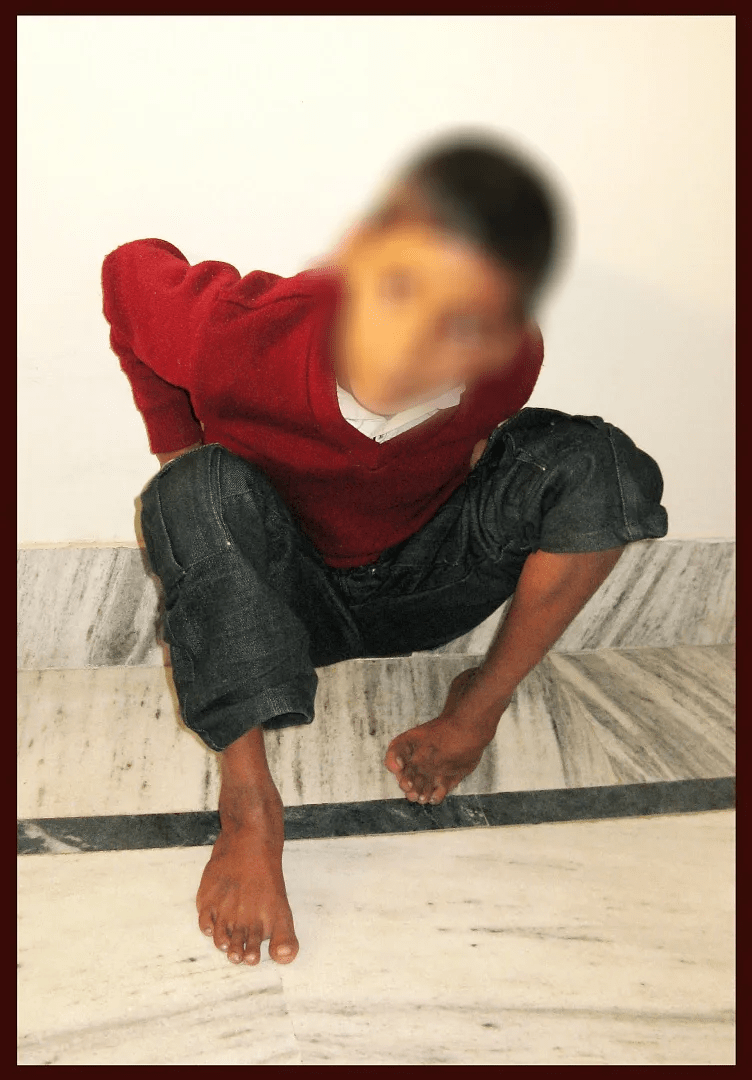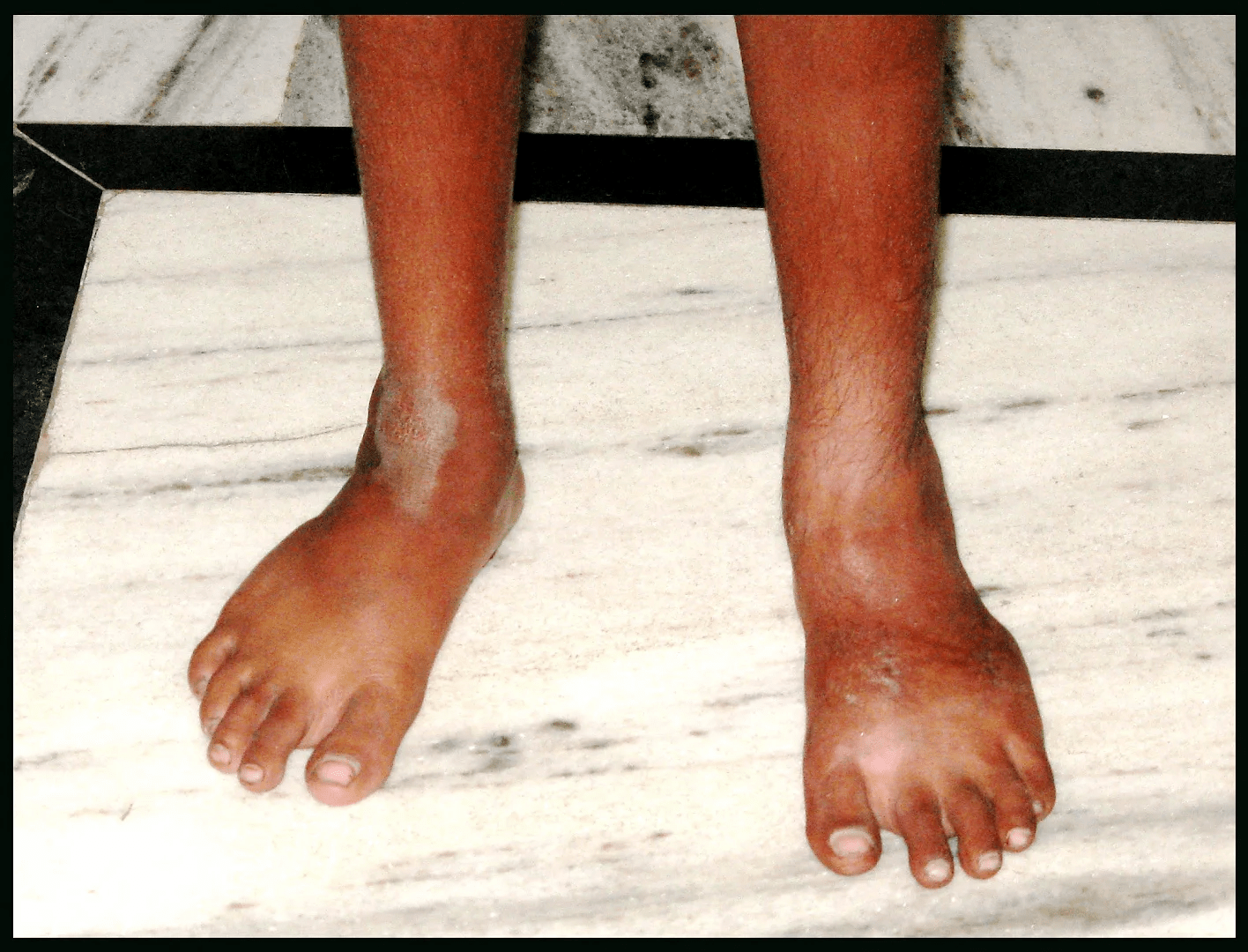CTEV (Congenital Talipes Equino Varus) Treatment
What is Clubfoot:
Club foot is also known as Talipes Equino Varus. It is a common condition, in which new born feet points medially and downward. This condition is diagnosed at birth. More common in males than females. Incidence is 1 per 1000 live birth.
Types of Clubfoot:
Club feet can be classified in three different ways –
Etiological:
1) idiopathic, 2) neurological 3) syndromic (related to an underlying syndrome)
Severity wise:
1. Postural CTEV 2. Structural CTEV
Idiopathic:
1-benign (postural) feet, 2- moderate feet 3- stiff feet 4- very sever stiff- stiff feet
Signs and Symptoms of Clubfoot:
- One or both feet in new born
- Stiff, rigid foot deformity
- High heel due to short tendoachilis
- Heel and fore foot both turned in with deep mid sole crease, small feet size
Causes of Clubfoot:
Most of the time, causes are not known. But sometimes, they can be a part of a syndrome in which many other systems of the body are affected. In mild variety, it may be due to intrauterine compression; otherwise, usually in moderate to severe variety is because of shortening of muscle, capsule, and bony deformity.
How to Prevent Clubfoot:
We can’t prevent the occurrence of ctev because it occurs because of unknown reasons and some time by genetic issues.
How to Treat Clubfoot:
A few decades back, many methods of treatment were in practice, but results were not so good, and recurrence was very common. Earlier, most of the club feet need surgery. This is because surgery in the club foot gives stiffness to the joint. With the invention of the Ponsetty concept of manipulation & plaster application, the success rate became much higher, chances of recurrence became less. Now irrespective of age, most CTEV feet can be managed successfully with the Ponsetty concept of plaster application. Now big surgery is needed rarely. Clubfeet, even in elder children, can be managed by the use of the Ponsetty plaster technique. If they need surgery, then they need minor surgery only.
- Ponsetty technique of Plaster Application: In the Ponsetty technique, we correct the deformity of the foot in a specific sequence. The first correction is varus, then adduction and equinus in the last. Four to six plasters are needed at 7-10 days intervals in most of the club foot. In the end, Tenotomy of heel card & 1-month plaster is needed to treat equinus deformity. After removal of plaster abduction, a specific foot brace is being given.
- Brace: After complete correction of foot deformity by Ponsetty plaster, we need to protect the foot from recurrence by a special brace. It keeps the foot in the outside direction of 60 degrees. For maintenance of this angle, both feet need to be fixed in the brace. Distance between both shoes will be equal to the distance between both shoulders of a child. This brace needs to be wear for 1.5 years to 2 years. Daily cleaning of shoes is mandatory. The brace needs to be changed as the child’s foot size increases. In this maintenance phase, massage, plantar stimulation, and some exercise have to be continued.
- Surgery: earlier most of the time, club feet need surgery, but results were not good due to recurrence and stiffness. Nowadays, with the use of the Ponsetty plaster technique, only minor surgery is needed in most cases.
- Percutaneous TA Tenotomy: In the Ponsetty concept of CTEV correction, we do percutaneous Tenotomy of heel card. This procedure is being done as an OPD procedure, and plaster will be given for four weeks. With this surgery, the heel position became better.
- Tibialis anterior tendon transfer: If the child has a recurrence of forefoot Varus, then the anterior tibialis transfer is being done. In this surgery tibialis anterior tendon releases from the base of 1st metatarsal base on the medial side and reattachs to the center of the foot. This tendon transfer balances the muscle power in the foot by which chances of recurrence decrease.
- Double osteotomy: If the front part of the foot has deviated medially. The length of the medial border of the foot is shorter than the lateral border. Then, in this case, bone is removed from the lateral side of the foot (cuboid) and placed on the medial side of the foot (medial cuneiform)
- Planter fasciotomy: If the plantar fascia is tight and there is severe caves deformity then release of the plantar fascia is required. This surgery is being utilized in elder children before applying plaster.
Complication of Clubfoot:
CTEV, as per say don’t cause crate any trouble except a progressive increase in deformity if not managed initially. If not managed, then the child will learn to stand and walk with a deformed foot. With an increase in age and weight, foot deformity can progress to extent that child can have pain, abnormal walking pattern, and shoe wear and tear
CTEV Treatment Options:
The main goal of ctev treatment is to correct the way your child’s foot looks and works before your child learns to walk. ctev treatment start as child born. In the past, very few ctev treatments were there to fix this condition.Postural CTEV is self revolving, but sometimes massage, stretching & manipulation may be required. Other stiff & rigid variety need manipulation and plaster application. Universal ctev treatment process is the Ponsetty methods of manipulation and repeated plaster application for 5-6 times at 7-10 days interval followed by Percutaneous tenotomy & plaster for 1 month. The child has to wear special shoes (Dennis brown splint) day and night till the age of 18 months. Some they need to wear for a longer time. Stretching exercise, planter stimulation, and oil massage are also advised to continue till the child start walking.
Final Outcome:
Most of the CTEV can have completely normal feet if correct methods of manipulation, precaution, Longer and persistent use of brace with strict follow-up. Recurrences are common with very stiff and syndromic club feet & the feet of child where strict guideline of wearing shoes were not followed. Recurrence will be of a milder variety if reported early and again can be corrected with same methods of Ponsetty plaster technique. In some cases, these CTEV feet require surgery in the form of muscle joint release, but it is not preferred now due to fear of stiff foot post-operatively. Now a days recurrence are being manage by tendon transfer, osteotomy with before, and afterward plaster application.
Frequently Asked Questions
Which Doctor Should I see for Ctev Treatment?
You should consult a Pediatric Orthopedic Surgeon. They provide the best clubfoot treatment for your child.
How much time clubfoot take to heal?
The majority of the Clubfoot problem can be corrected in the childhood period in about 6 to 8 weeks of time under the proper guidance.
Can Clubfoot surgery need to be done immediately as soon as the clubfoot is detected in the newborn child?
No, Surgery is done, only if in case conservative treatment fails for the child. Most of the club foot can be managed by plaster along with very minor surgery . surgery only in recurrent and relapse and also after plaster application
What happens if the clubfoot is left untreated?
If clubfoot is left untreated, then your child’s foot will be automatically turned inwards, and your child will find difficulty in walking as the child will not be able to place his foot flat on the ground. Wearing shoes will also become tough.
Reviewed and Submitted by Dr. Jitendra Kumar Jain
Last updated on October 30, 2020
Dr.Jitendra Jain, MD and DNB (Orthopedics), president at Trishla Foundation, an NGO for treatment of cerebral palsy, and a Consultant Pediatric Orthopedic Surgeon & Cerebral Palsy Specialist at Trishla Orthopedic Clinic & Rehab Center.
Dr. J. K. Jain is a member of the general council at Dr. SMN university of rehabilitation, Lucknow, a member of the advisory board chief commissioner for PWD, Govt. of India (New Delhi), a member of the state disability research committee (U.P.), and a member of the committee of RCI, New Delhi. He has been awarded many awards, including the Dr.Bhagawan das memorial award, the spirit of humanity award, and the state govt. award for his services towards PWD, etc. Times of India has posted his work many times and mentioned him as one of the best doctors in the field of Pediatric Orthopedics. He helped many children recovering from cerebral palsy, just like comedian jay Chanikara, who is now able to stand and walk without any support, Abena, a Ghana girl with cerebral palsy, and many more. He also organized the National Wheelchair cricket tournament and created World’s first cerebral palsy village foundation in Prayagraj. He successfully treated 10,000+ children with various kinds of orthopedic disability, conducted 160+ free assessment camps, and produced a documentary film on cerebral palsy.


Walk in Appointments Available Daily
You can make an appointment online for video tale-consultation by fixing up an appointment at this website or you can visit the clinic to make an appointment in person and show to doctor with the care of social distancing at the given time.
Contact us
Call Us
0532-2468989
+ 91 9415014994
+ 91 8577873545
+ 91 9455001645
Email Us
totrishlaortho@gmail.com
Our Location
Dr. Jitendra Kumar Jain
Trishla Orthopedic Clinic & Rehab center, 182C / 350A, Tagore Town, Prayagraj (Allahabad) U.P-211002, India
